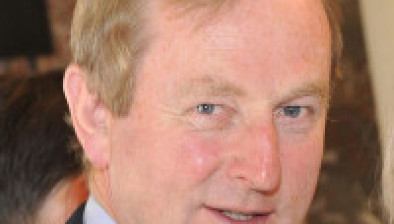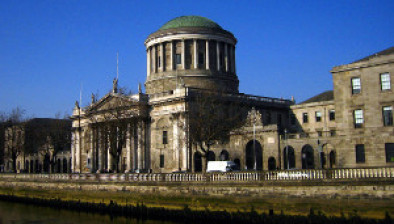Supreme Court: Government’s climate change plan quashed
The Supreme Court has quashed the Government’s National Mitigation Plan to meet the National Transition Objective (NTO) in combating climate change on the grounds that it is “excessively vague and aspirational”.

About this case:
- Citation:[2020] IESC 49
- Judgment:
- Court:Supreme Court
- Judge:Mr Justice Frank Clarke
The Chief Justice Mr Justice Frank Clarke, giving the judgment of the seven-judge court ruled that the plan does not provide sufficient detail about how Ireland will reduce greenhouse gas emissions.
Background
Friends of the Irish Environment CLG (FIE) contended that the Government of Ireland, in the plan, failed to adequately vindicate rights it claimed are guaranteed by either or both of the Constitution and the European Convention on Human Rights (ECHR). It was argued that the plan is ultra vires the relevant legislation.
The High Court dismissed FIE’s proceedings last September and FIE was given leave to appeal directly to the Supreme Court.
Supreme Court
The court noted that the scientific evidence indicates that there is a consistent and almost linear relationship between carbon dioxide emissions and projected global temperature increases over the next 80 years: “Climate change is already having a profound environmental and societal impact in Ireland and is predicted to pose further risks to the environment, both in Ireland and globally, in the future.”
The judges noted the general consensus in climate science that, if the effects of global warming are to be mitigated or reduced, the rise in global temperatures should not exceed 2°C above pre-industrial levels. They indicated that the trial judge, Mr Justice Michael MacGrath, noted that, since the Paris Agreement 2015, part of the United Nations Framework Convention on Climate Change, scientific thinking has moved in the direction of a lower figure which is in the region of 1.5°C above pre-industrial levels.
Both FIE and the Government agreed that the consequences of failing to address climate change are very severe, with potential significant risk both to life and health throughout the world.
The court considered a summary of the impact on Ireland which was prepared by the Environmental Protection Agency, which referred to an increased risk from extreme weather likely to cause death, injury, ill health and disrupted livelihoods. It also referred to the risk that hundreds of square kilometres of coastal land could be inundated due to sea level rises, and to more extreme storm activity which would have the potential to bring the devastation of storm surges to the coast of Ireland. There was further reference to a likely increase in heat-related mortalities, together with a further risk in food-borne disease and infectious diseases, and to a probable increase in skin cancer cases and mental health impacts.
The plan was adopted under the Climate Action and Low Carbon Development Act 2015 s.3(1) for the purpose of enabling Ireland to pursue and achieve the objective of transitioning to a low carbon climate resilient and environmentally sustainable economy by the end of 2050.
FIE argued that the plan envisages an increase, rather than a decrease, in emissions over the initial period of the plan while committing to achieving the objective of zero net carbon emissions by 2050. A key argument advanced by FIE suggests that the level of global warming which will have come about by 2050 will be dependent not only on whether zero net emissions have been achieved by that time, but also the way in which the pattern of emission reduction has developed in the intervening years.
It said that it is the total amount of emissions which drive climate change and that an initial increase in emissions, even if the ultimate target of zero net emissions by 2050 is achieved, will inevitably lead to a greater total volume of emissions in the period to 2050, and therefore not contributing sufficiently to the aim of reducing warming.
The Government argued that FIE had mischaracterised the plan as representing a stand-alone measure. It suggested that the plan should be regarded, as the trial judge held, as being a living document whose measures are not set in stone and do not represent a once and for all response to the need for urgent action to tackle climate change.
FIE contended that the plan failed to vindicate rights under the Constitution and the ECHR such that the adoption of the plan is unlawful. FIE placed reliance on the constitutional right to life and what it said is the obligation of the State to seek to protect persons against a future threat to life arising from climate change. FIE placed reliance on the constitutional right to bodily integrity, and it was again said that the consequences of climate change will significantly impact on the health and bodily integrity of persons thus infringing that right.
The Government questioned whether it can be said that there is an unenumerated right to an environment consistent with human dignity. Mr Justice Max Barrett recognised such a right in Friends of the Irish Environment v Fingal County Council [2017] IEHC 695.
FIE argued that the European Court of Human Rights (ECtHR) considered rights to a clean environment in Fadeyeva v Russia (App. No. 55723/00) (2005) 45 ECRR 10. The Government submitted that the ECtHR environmental pollution cases were confined to situations where the pollution concerned “directly and seriously” creates an imminent and immediate risk to guaranteed rights.
The Government argued that what FIE sought to maintain was a so-called actio popularis which form of action, it said, does not exist in Irish constitutional law, relying on the Supreme Court judgment in Mohan v Ireland [2019] IESC 18, where it was said that only a person who is affected in reality or as a matter of fact may bring such a challenge.
The Government argued that FIE, being an incorporated association, cannot assert either constitutional or ECHR rights which it could not ever enjoy, such as the right to life or the right to bodily integrity. The Government submitted that, to allow FIE to maintain these proceedings would be to recognise a jus tertii contrary, it was argued, to the decision of this Court in Cahill v Sutton [1980] IR 269. It was argued that the ECHR does not permit an actio popularis or complaints in abstracto and that likewise the ECtHR would not grant standing to corporate bodies for violation of rights which they do not have.
FIE argued that the court should recognise the standing of FIE notwithstanding its corporate nature and the fact that it sought to enforce rights whose infringement cannot affect it, citing (by way of analogy) SPUC Ltd v Coogan (No 1) [1989] IR 734 and Irish Penal Reform Trust v Minister for Justice [2005] IEHC 305.
Reference was made to Digital Rights Ireland Ltd v Minister for Communications [2010] 3 IR 251, in which Mr Justice William McKechnie had suggested that a more relaxed approach to standing might be taken where it was clear that a particular public act could adversely affect a plaintiff’s constitutional or ECHR rights, or society as a whole. In these circumstances, the court held that a potential plaintiff should not be precluded from bringing proceedings to protect the rights of others.
Findings
The Chief Justice, delivering the judgment of the court, said that he would accept that there are circumstances in which an overly strict approach to standing could lead to important rights not being vindicated. Mohan, which re-emphasised the need, ordinarily, for a plaintiff to be able to demonstrate that they have been affected in reality or as a matter of fact by virtue of the measure which they seek to challenge on the basis that it breaches rights is still part of the constitutional order. The circumstances in which it is permissible to accord standing outside the bounds of that basic principle “must necessarily be limited and involve situations where there would be a real risk that important rights would not be vindicated unless a more relaxed attitude to standing were adopted”.
The Chief Justice said that constitutional rights which are not expressly stated in the Constitution’s wording are more appropriately described as being derived rights rather than unenumerated rights. The judge said that there is a danger that the use of the term “unenumerated” conveys an impression that judges simply identify rights of which they approve and deem them to be part of the Constitution.
The words “derived rights” convey that there must be “some root of title in the text or structure of the Constitution” from which the right in question can be derived.
“It may stem, for example, from a constitutional value such as dignity when taken in conjunction with other express rights or obligations. It may stem from the democratic nature of the State whose fundamental structures are set out in the Constitution. It may derive from a combination of rights, values and structure. However, it cannot derive simply from judges looking into their hearts and identifying rights which they think should be in the Constitution.”
The Chief Justice cited Mr Justice Seamus Henchy in McGee that the “infinite variety in the relationships between the citizen and his fellows and between the citizen and the State makes an exhaustive enumeration of the guaranteed rights difficult, if not impossible.”
The judges said that a “blurring of the separation of powers by permitting issues which are more properly political and policy matters (for the legislature and the executive) to impermissibly drift into the judicial sphere” needs to be guarded against.
The court held that the “very vague nature of the right” identified by Mr Justice Barrett in Fingal Co. Council can be demonstrated “from the fact that it seemed to have little or no bearing on the outcome of those proceedings.” The Chief Justice said that the right to an environment consistent with human dignity, or alternatively the right to a healthy environment, as identified in Fingal Co. Council is impermissibly vague. It does not bring matters beyond the right to life or the right to bodily integrity, “in which case there is no need for it.”
It was held that the plan “falls a long way short” of the specificity required by the 2015 Act, and there is a clear obligation on the Government to give “some realistic level of detail” about how it intended to meet the NTO
The judge said that he could not see how “a reasonable and interested observer would not really have a sufficient view of just how it is currently hoped that such measures might contribute towards achieving the NTO to form a considered judgement”.
Conclusion
The court concluded that FIE, as a corporate entity which does not enjoy in itself the right to life or the right to bodily integrity, does not have standing to maintain the rights-based arguments sought to be put forward whether under the Constitution or under the ECHR. The judge therefore said it was not appropriate to address the rights-based arguments put forward.
The plan was quashed.









